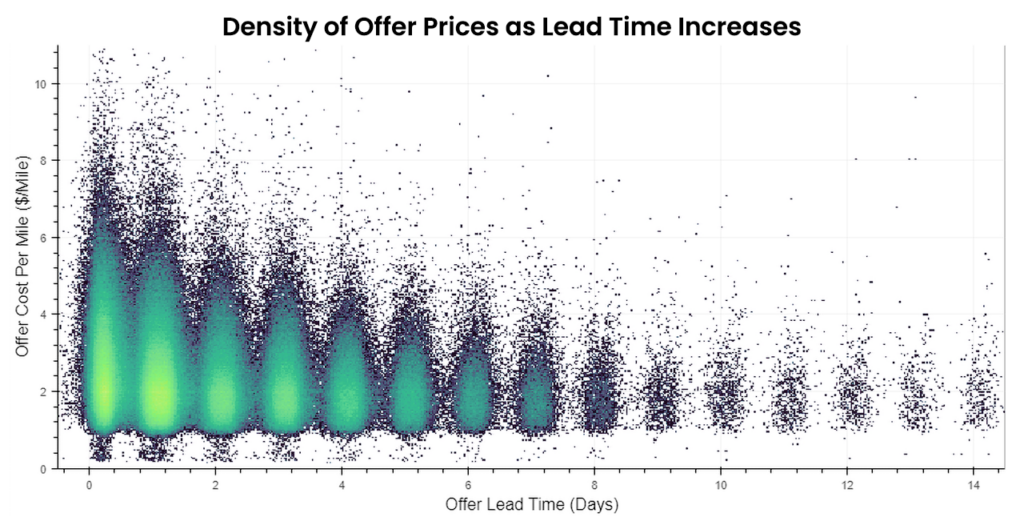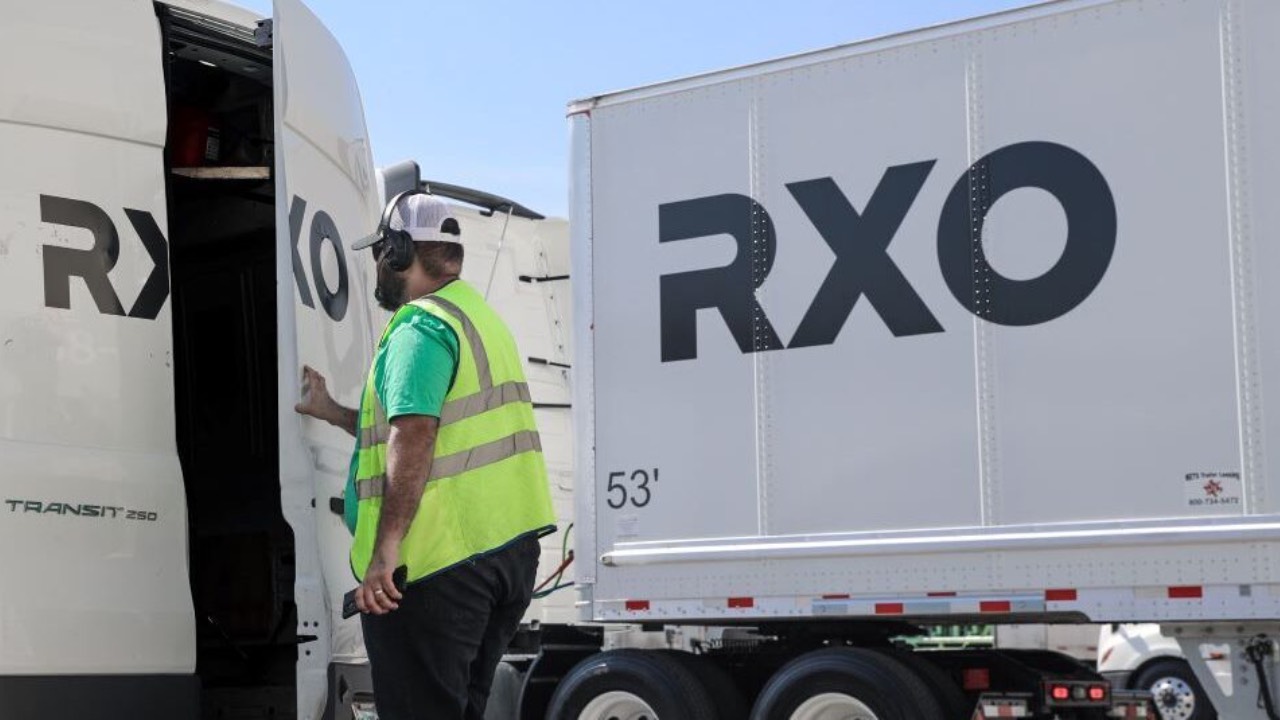Every shipper — no matter how big or small — has to move at least some of their full truckload freight on the spot market.
Whether you have unplanned shipments, service failures, not enough volume to secure contract pricing or any other reason, you will have to get spot quotes for at least some of your freight.
But while getting spot rates is a common practice, not every shipper does it well.
Want to position yourself to get accurate, reasonable pricing and reliable service for your truckload (TL) spot shipments?
These 8 do’s and don’ts of spot quoting will help you price truckload like a freight pro.
First, let’s cover some basics.
Looking for insights on LTL freight quoting instead?
While similar to what you’ll find in this guide, there are a few key differences for LTL freight. We made a guide to LTL freight quoting so you’re covered no matter what mode you’re shipping.
What Is a Spot Rate in Truckload Shipping?
A spot rate, also called a spot quote, is a one-time fee that a shipper pays to move a load (or shipment) at current market pricing.
Spot rates are a form of short-term, transactional freight pricing that reflect the real-time balance of carrier supply and shipper demand in the market.
Here are several common scenarios where shippers use spot rates:
- Not enough volume (loads) in a shipping lane to secure committed (contract) pricing.
- Unexpected/unplanned freight volumes.
- One-off shipments outside of usual shipping lanes.
- Special or non-standard load requirements.
8 Rules for Getting Better Truckload Spot Rates:
1. Do provide accurate, detailed shipment information.
Carriers and 3PLs generate spot quotes based on each shipment’s unique attributes and needs.
While you can get a spot quote with just the origin and destination zip codes, pick-up date, and equipment requirements for your shipment, it’s best to have all your shipment details on hand when you confirm pricing and capacity.
Why? If you exclude important information or ballpark details when requesting your spot rate, you may end up paying for it later (especially if your shipment has non-standard requirements).
More precise shipment details = more accurate spot rates.
These details will help you get the most accurate full truckload spot quote:
- Origin city or zip code
- Destination city or zip code
- Pick-up date
- Equipment type (i.e., dry van, refrigerated, flatbed, RGN, etc.)
- Commodity type
- Product weight
- Special requirements or attributes (see below)
Note: If your shipment requires exact pick-up and delivery appointments, make sure to communicate your appointment times since these details may impact your rate.
2. Don’t forget to account for special requirements.
If your shipment requires specialized equipment, additional product handling or any other non-standard services, make sure to communicate those details with your provider when you confirm rates and capacity.
These special requirements will likely increase your rate up front, but accurate communication will help you avoid expensive trucking accessorials and service disruptions when it’s actually time to ship.
Standard Truckload Shipping Requirements:
- Live load / live unload
- “No touch” by driver
Driver is not expected to assist with product loading/unloading - Legal weight
80,000 lbs. max weight for a loaded truck, which usually translates to ~44-45,000 lbs. of freight (pending equipment type)
Non-Standard Truckload Shipping Requirements:
- Drop trailer
- Hazardous materials
- Multi-stop
- Driver assist
- Floor-loaded
- +2 hours of loading/unloading
- Equipment age restrictions
3. Do try to get your spot rates in advance.
Typically, shippers request spot quotes 1-2 business days before their shipping date.
That said, it’s not uncommon for shippers to request same-day spot quotes or, conversely, to request quotes more than a week in advance.
Just keep in mind: spot rates tend to increase as your pick-up date approaches.
Whenever possible, try to request your quotes as soon as you can confirm all the relevant shipment details.
Giving yourself a few extra days to secure pricing and capacity will generally lead to less expensive freight rates.
The data below shows that, while there are usually more carriers available as the pick-up date approaches, the average spot rate also tends to get higher.

4. Don’t assume a quote from last week will be the same this week.
Spot market rates can be volatile, sometimes changing over the course of a single day.
Just because you moved a load for a certain rate the last time does not mean it will necessarily be the same for your next shipment in the same lane. Always check with your provider to get an up-to-date market rate.
When you get a rate that works for your shipment, don’t wait to confirm it with your provider — let them know ASAP to lock in pricing and capacity.
Once you and your provider agree on a rate, a reliable carrier or 3PL will not change it unless an important piece of information about your shipment changes.
In the event your shipment details change, make sure you get an updated quote. Even if it ends up increasing your rate, it will help you avoid costly accessorials during the shipping process.
5. Do set pick up & delivery appointments during regular business hours.
Planning to ship your goods over the weekend or during a holiday?
If so, expect to pay more.
Though they’re incredibly hard-working, drivers like to celebrate holidays and sleep at night too.
There is usually much more capacity available during regular business hours (Monday-Friday, 08:00-17:00), so try to set your appointments during those times.
When your shipments depend on precise pickup and delivery times, make sure to include each appointment time in your quote request so your quote will be accurate.
Pro Tip: Flexibility is your friend when setting appointments. Whenever possible, pick-up and delivery windows (instead of strict appointment times) can open you up to more capacity options, as drivers have to manage strict Hours of Service rules when planning their day.
6. Do get digital freight quotes.
There is a huge amount of freight technology in the market — use it to your advantage.
Many providers’ digital freight platforms (like RXO ConnectTM) or freight APIs can give you free instant freight quotes. This is a great way to keep up to date on current pricing without sending a lot of emails.
A good freight provider will have logistics professionals on-call when you have questions or need additional help, but the ability to get quotes on demand can add a lot of efficiency back into your day.
7. Don’t necessarily settle for the cheapest provider.
For many shippers, choosing their transportation providers often comes down to cost.
While it’s certainly important, you should take other factors like expertise, trust, efficiency and service into account when making your decision.
A cheap spot rate that results in a missed pick-up, hidden accessorials or damaged product will probably end up costing your business more.
What should you do?
Get quotes from a few different trusted providers — it’s smart to shop around to see where the market is for many opportunities.
Once you have a few quotes, evaluate the rates while considering your unique load requirements and the providers’ strengths and weaknesses.
- Will this provider hit my service requirements?
- Are they easy to do business with?
- Can I use their tech tools to operate more efficiently?
- If something goes wrong, can I trust them to fix it?
If it’s a high-value load that absolutely has to arrive by 5 p.m. to protect this customer relationship, service should be the deciding factor, not the bargain rate.
8. Do know what you’re paying for.
Generally, spot rates are all-in rates, which means they include the cost of fuel, whereas contract rates are usually linehaul rates, which are not inclusive of fuel.
It’s important to verify if your rate is all-in or not before you accept a spot rate, as well as any other charges. If the rate is not all-in, ask your provider for their fuel surcharge (FSC) matrix.
You should also ask to see your provider’s accessorial schedule. Many of these charges are based on industry standards (e.g. 2 hours free loading/unloading), but if you’re working with a new provider, it’s important to check.
Bottom line: before you accept a spot quote, make sure you know exactly what you’re paying for and if you need to factor in any additional costs.


